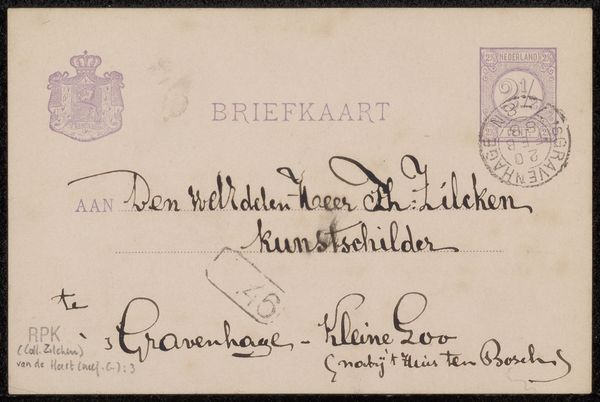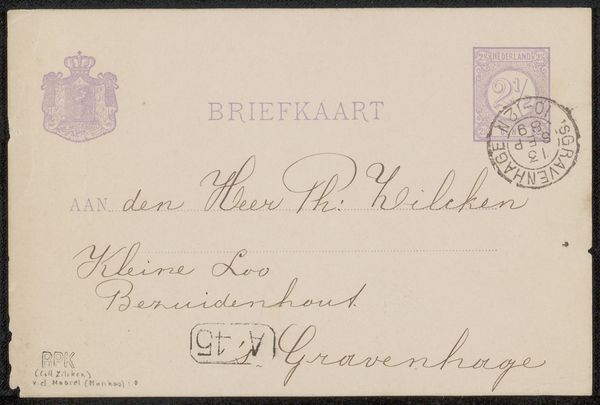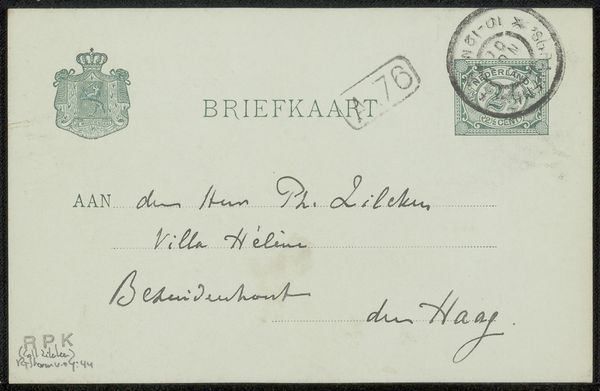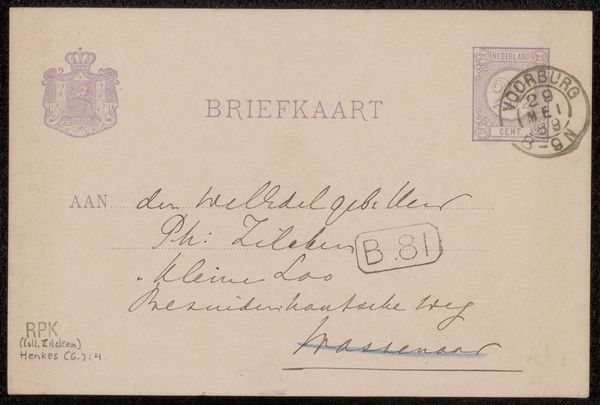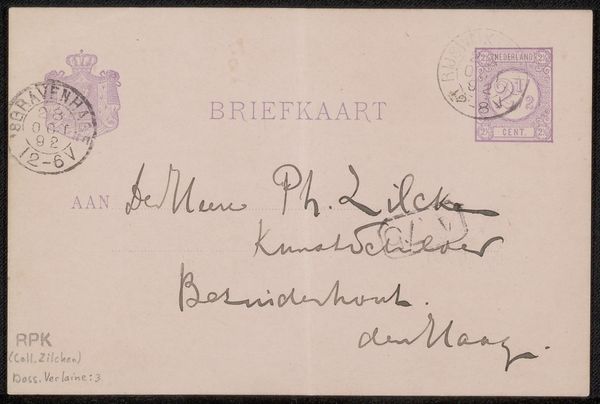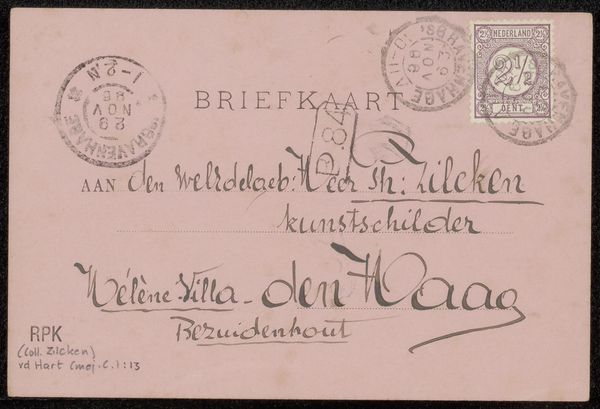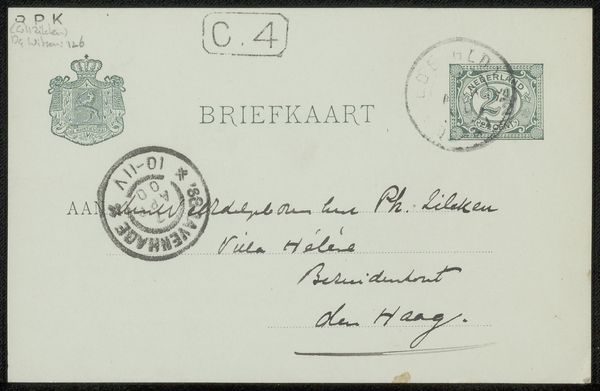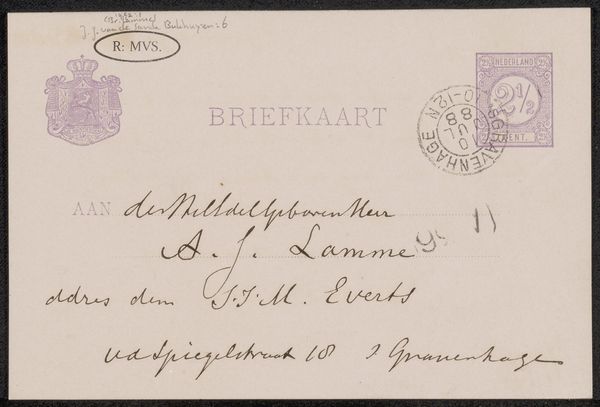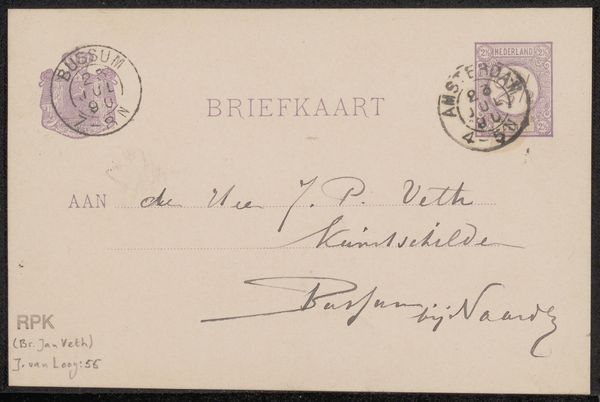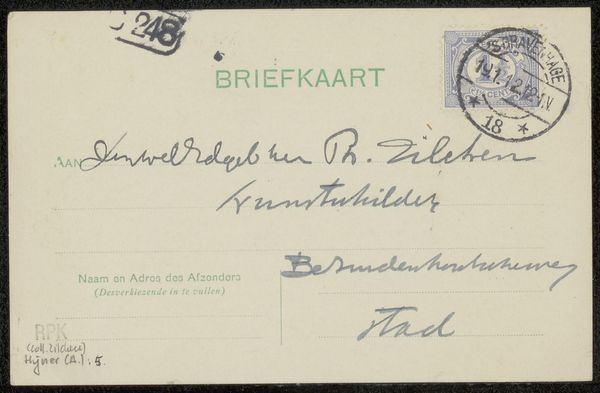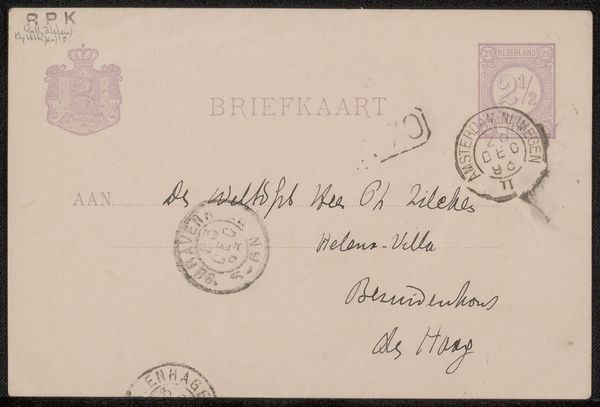
drawing, ink
#
drawing
#
ink
Copyright: Rijks Museum: Open Domain
Curator: This postcard, possibly from between 1890 and 1892, is titled “Briefkaart aan Philip Zilcken,” translating to “Postcard to Philip Zilcken." It appears to be ink on paper. Editor: It feels intimate, almost ghostly. The faint lavender ink of the printed text and the darker grey script seem to speak of a past era. Curator: Exactly! Correspondence like this tells us so much about artistic networks and cultural exchange at the time. It’s more than just a message; it's a snapshot of the Dutch art scene of that period. Sending work via postcard also demonstrates a perceived accessibility that is tied to institutional networks for emerging artists, as Philip Zilcken was at the time. Editor: What stands out to me is how the imagery of postal ephemera is both functional and highly symbolic. The Dutch crest with the lion symbolizes national identity and power, juxtaposed with the humble purpose of a brief message between colleagues, and demonstrates a sense of order over an otherwise messy exchange of art and ideas. Curator: True. It illustrates how something as simple as a postcard could become a marker of belonging and identity. And sending from the Hague further indicates the institutional power dynamics at play in supporting particular artists. Editor: And look at the address – meticulously lettered, almost like a piece of calligraphy in itself. It imbues this small object with an emotional gravity – conveying a connection that transcends mere information. It makes me wonder what was so pressing at that moment for the parties involved to exchange. Curator: The stamp provides tangible evidence of its journey and the social context of art in the late 19th century. Think about the act of physically writing, addressing, stamping and mailing, particularly among individuals who circulated and upheld symbolic power, wealth, and a very curated identity. Editor: Examining these layers makes the card more than just old paper and ink. We see a bridge between individuals and their ambitions across time. Curator: I agree. A tangible glimpse into history.
Comments
No comments
Be the first to comment and join the conversation on the ultimate creative platform.
